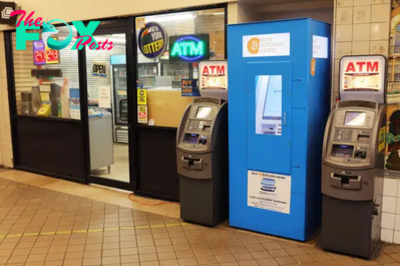Business
Companies Shouldn’t Overlook This IRA Fund That’s Boosting Local Climate Projects
(To get this story in your inbox, subscribe to the TIME CO2 Leadership Report newsletter here.)
Last month, the Greenhouse Gas Reduction Fund (GGRF) committed to sending $27 billion to a range of organizations to support community climate and clean energy projects. Within a matter of months, the funding will help accelerate everything from local solar to residential energy efficiency improvements, bringing the benefits of the energy transition to backyards around the United States.
Jahi Wise, who oversaw the implementation of the GGRF before stepping down last week, told me on Sept. 3 that the program would eventually fund tens of thousands of projects. “It’s a vote of confidence in American communities and the American people,” he says.
Indeed, the program, created by the INFLation Reduction Act (IRA), and administered by the Environmental Protection Agency, has been praised by environmental groups for bringing the energy transition to people’s doorsteps, particularly low-income areas and communities of color. But the projects financed by the fund are really just the beginning. And it’s not about just supporting a few local organizations and moving on. The GGRF has the potential to spark the broader financial innovation needed to encourage the private sector to invest in local clean energy projects—helping unlock the trillions necessary for the energy transition.
“This is really a scale play,” says Wise. “The idea here is to use this public capital to spur financial innovation and financial products that allow more projects to be completed.”
The GGRF is the creation of a short section of the IRA, easy to miss in the sprawling law. When the law was hastily enacted in 2022, suMMAries often listed the fund as just one quick item on a long list of new programs. And, yet, it is the single biggest non-tax item from the law.
Its structure is also somewhat complicated. It’s divided into three sub-programs, which then fund an array of independent non-profit organizations. Those organizations are then responsible for putting the money to work—convening with project developers, entrepreneurs, and communities to hammer out the best ways to use the funds while meeting mandates and guidelines laid out by the GGRF.
The fund’s novelty is also its strength. While the federal government has an array of programs aimed at supporting innovative companies and new technologies, this fund is squarely aimed at advancing projects deploying mature technologies in local areas. That means that the benefits of the energy transition can be felt directly by people on the ground, especially underserved communities that thus far may have been ignored by clean energy entrepreneurs.
Potential financing tools are wide ranging and might include loans for specific projects, debt to help a company enter a new market, or loan guarantees for communities perceived as having credit risk—to name a few. These aren’t new mechanisms, but the innovation comes in adapting them to fit the particular needs of clean energy projects in communities, particularly where private finance has yet to fund these sorts of projects. “The kind of innovation here is strategic capital insertion for products that, in many cases, already exist,” says Wise.
The private sector will be key to GGRF’s success. To start, the fund is hoping to attract seven dollars from the private sector for every dollar of public money deployed. That will make the funds allocated by the IRA stretch further almost immediately.
But, in the long-term, the impact of the program will also hinge on private capital continuing to finance the same type of projects. The GGRF offers an opportunity to prove that these deals make sense for investors focused on returns. “The idea here is not just to hit the kind of mission-aligned funds,” says Wise. “It's to also reach deeper. It's the areas of the market that are a little more agnostic about mission and impact, but where we know there's a ton of capital that we need.”
-

 Business2h ago
Business2h agoWhat are halal mortgages?
-

 Business2h ago
Business2h agoAmerica’s dairy farms are disappearing, down 95% since the 1970s − milk price rules are one reason why
-

 Business1d ago
Business1d agoPlanning a Dream Wedding at Occidental Tucancún Resort: What to Expect
-

 Business2d ago
Business2d agoCustomers Question New Kohl’s Checkout in Wappingers
-

 Business2d ago
Business2d agoIs Friday the 13th Your Chance for Luck? Enter ActionCOACH’s £1 Million Prize Draw Now
-

 Business3d ago
Business3d agoArif Efendi: How to Launch a Start-Up Business
-

 Business3d ago
Business3d agoHalifax Intermediaries: Comprehensive Mortgage Solutions and Support
-

 Business3d ago
Business3d agoWoonsocket homeowners at risk of tax sale, or with liens: Statewide RI Housing program resumes



























